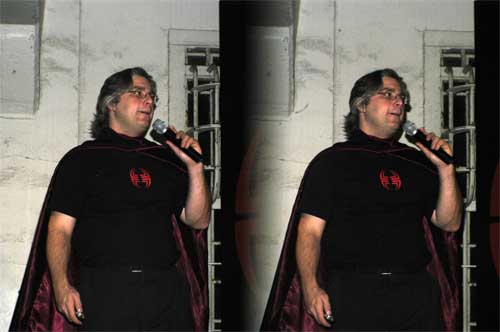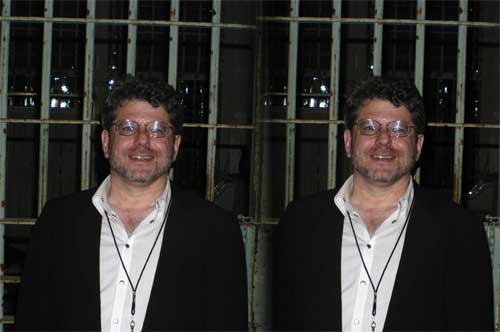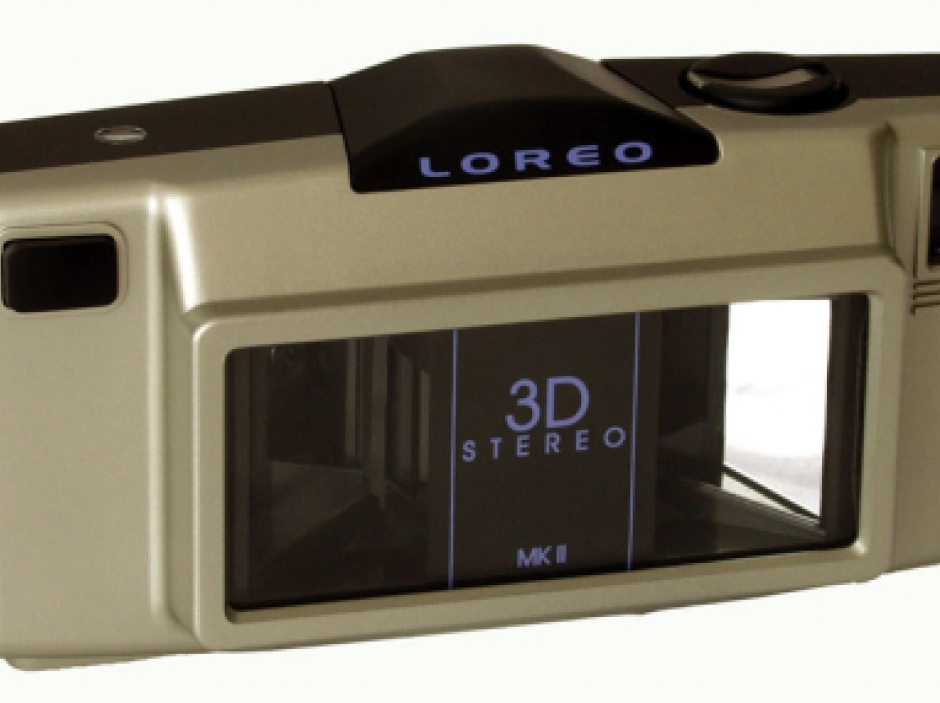On his journeys through Mexico, my grandfather took stereo slide images using a special two lens camera. To view the images we had to use a special projector with 3D glasses (which always gave me a headache) or a Viewmaster like viewer. The idea is that by taking two images slightly apart the camera simulates the depth of field experience that our eyes produce naturally. Each eye receives an image of the same subject with a slightly different point of view. Our brain translates the difference and renders a single picture with a sense of 3D. I still have his rig, but with the world going digital, I admit that I haven't used it in years. I'm not even sure you can still get the film processed.
When in Toronto last month I came upon a store that features products from Asia. Tucked away in a case with other odd cameras (more about them later) was a wide camera that resembled a modern version of Grandpa's stereo rig.
 Manufactured by a company called Loreo, it is designed to produce stereo prints, not slides. The camera puts the images side by side on a single 4 x 6 print, so you only get half of the picture image to work with. This turns out to be a rectangular image that is roughly 4 x 3, slightly taller than wide. The film is processed just as any other 4x6 print, so you can use the 1 hour photo shops without any problems.
Manufactured by a company called Loreo, it is designed to produce stereo prints, not slides. The camera puts the images side by side on a single 4 x 6 print, so you only get half of the picture image to work with. This turns out to be a rectangular image that is roughly 4 x 3, slightly taller than wide. The film is processed just as any other 4x6 print, so you can use the 1 hour photo shops without any problems.
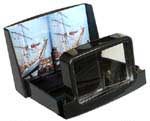 The images are viewed in a supplied viewer stand. You look through the lens and the images are displayed in stereo! I had to try it out!
The images are viewed in a supplied viewer stand. You look through the lens and the images are displayed in stereo! I had to try it out!The mechanics and optics used in this camera took me back to the days of an Instamatic. If you've been using a digital camera lately, you may be disappointed by the image quality. Using 400 ASA film, the outdoor pictures had nice color and clarity, but indoors photos with the built in flash were a bit dull and understaturated. How much of this was the result of the processing and how much the fault of the camera goes beyond me. However, since I ordered the images on a disk, in addition to the prints, I was able to correct them for color in Photoshop. The images I printed from the disk were significantly better.
The results were very satisfactory and produced lots of excitement when I showed them off at a recent party. The 3D effect is most striking if you include objects in your picture that are of varying depths. Just lining up people against a wall isn't very interesting, but if pictures in a garden give lots of depth, from the close up flowers to the people to the clouds and blue sky beyond.
After I got back to the office I did a web search and found that the same company offers a lens for digital slrs as well as viewer glasses that let the images be seen in 3D on a computer monitor. Depending on your model of camera this will set you back between 50 and just over a hundred dollars. . I placed the order via the internet and received my order within two weeks.
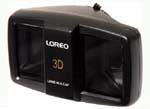 Although the instructions for the lens cap stated that it could work with automatic mode of most SLRs, on mine I had to use the manual exposure mode. There are two aperture settings on the lens and three focus zones. Making its use slightly difficult was the fact that it doesn't have an automatic diaphragm. As a result, looking through the lens can get very dark. Digital photography really shines with this lens, since you can shoot, evaluate, and shoot again, if necessary.
Although the instructions for the lens cap stated that it could work with automatic mode of most SLRs, on mine I had to use the manual exposure mode. There are two aperture settings on the lens and three focus zones. Making its use slightly difficult was the fact that it doesn't have an automatic diaphragm. As a result, looking through the lens can get very dark. Digital photography really shines with this lens, since you can shoot, evaluate, and shoot again, if necessary.I ordered an inexpensive ten pack of cardboard viewers for friends and family. Now, they can view the images on the computer screen or in prints. I also found that without too much difficulty I could view the images in 3D just by crossing my eyes while looking at the pictures at as distance of about six inches.
Here are some images I took on a recent trip to Alcatraz Island for the premier of NCSoft's City of Villains. Try crossing your eyes slightly and you'll see three images come into focus - the left and right combine to make the 3D center image. I think you'll agree that the results are very exciting!

